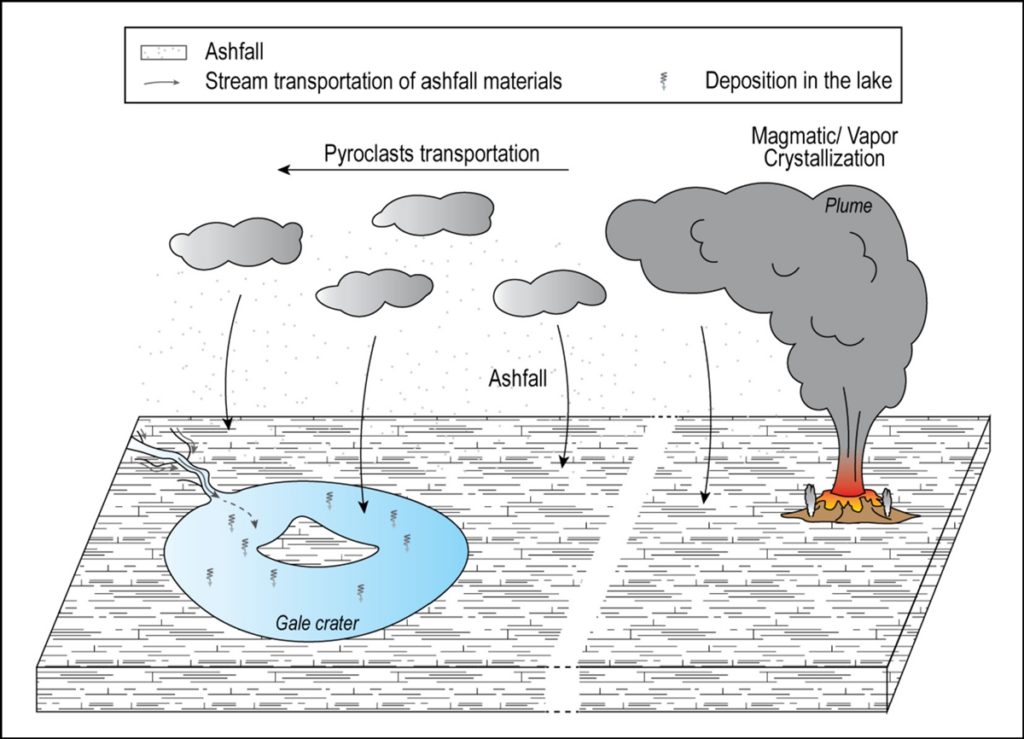Scientists were stunned when NASA’s Curiosity Mars rover uncovered the mineral tridymite in Gale Crater in 2016. This high-temperature, low-pressure form of quartz is usually associated with felsic (silica-rich) volcanic systems here on Earth. A new study published in Earth and Planetary Science Letters may explain why it was found on the usually mafic (silica-poor) rocks of the Red Planet.
As part of its mission to investigate Gale Crater’s 3-billion-year-old sedimentary basin, Curiosity took a meter-long sample from the “Buckskin” drill site. The sediment core contained an unusual interval rich in silica, in which tridymite was identified in its monoclinic crystal form. Monoclinic tridymite is extremely rare on Earth, associated with fast-cooling felsic magma, hydrothermal environments, and meteorite impact sites.
While at Northern Arizona University, lead author Valerie Payré (now an assistant professor in Earth and environmental sciences at the University of Iowa) and her collaborators investigated the origins of the Martian tridymite. They reevaluated data from every reported find of tridymite on Earth, assessed models of Martian volcanism, evaluated sedimentary evidence from Gale Crater, and ran thermodynamic models to look for the most likely formation mechanism.
A Silica-Rich Explosion
“Based on the geology of Gale Crater,” Payré said, “we concluded that the most plausible formation pathway of tridymite was its crystallization from an evolved magma.” Their results suggest that the magma sat for longer than usual in a volcanic chamber and the partial cooling that took place in the chamber concentrated the silicon in the magma. A volcanic eruption then explosively expelled the material as tridymite-rich ash that fell into Gale Crater’s lake.

This formation pathway is surprising, Payré explained, because tridymite usually crystallizes from silica-rich felsic magma, and the Martian surface was thought to have formed from basaltic eruptions that are low in silica. The new results indicate that at least one silicic, explosive eruption occurred on Mars in the Hesperian period that spawned Gale crater.
Harry McSween said the recent study’s “conclusion that high-temperature forms of silica (tridymite and cristobalite) in a mudstone on Mars formed during an explosive volcanic eruption is the most plausible explanation.” McSween is a professor of Earth and planetary science at the University of Tennessee Knoxville and was not involved in the new research.
“Most explosive volcanoes on Earth form from silica-rich magmas,” McSween explained, “and the discovery of these silica minerals [in Gale Crater] provides the first evidence that silica-rich magmas on Mars may have also erupted violently in the planet’s distant past.”
Incomplete mineralogy assessments of Mars’s igneous terrains may have led scientists to believe that the terrains are mostly low in silica, but we can now consider another possibility, Payré said. “Mars volcanism is not straightforward, and fractional crystallization, crustal assimilation, and other crustal processes likely affected the chemistry and mineralogy of Martian magmas throughout Mars’ history.”
—Clarissa Wright (@ClarissaWrights), Science Writer

